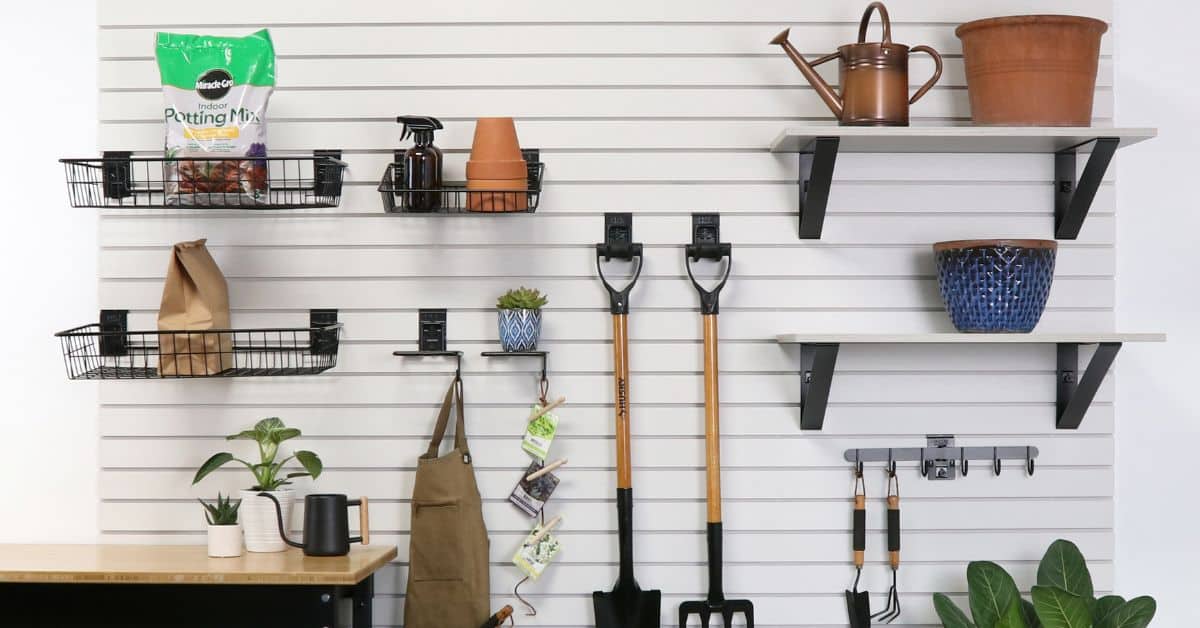
PVC Slatwall vs. Traditional MDF Slatwall: Pros and Cons
If you’re renovating your garage, workshop, or outdoor space, slatwall is an excellent choice for easy and attractive vertical storage and organization. More and more homeowners are adopting slatwall due to its versatility, but not every slatwall material option is the same. Two of the most common slatwall options are traditional medium-density fiberboard (MDF) and polyvinyl chloride (PVC).
Deciding between the two means weighing the advantages and drawbacks of each option, and we can help you do just that! Below, we’ll tackle PVC slatwall versus traditional MDF slatwall and review the pros and cons of each option.
What Is Slatwall?
Before we get into the nitty-gritty of these slatwall materials, let’s review the basics of slatwall storage systems. Slatwall panels are versatile wall fixtures with evenly spaced grooves that can hold shelves, hooks, and brackets for storage. Originally popular in retail, they now bring functionality and organization to garages, workshops, and even home interiors.
From power tools and sports gear to coats and merchandise, slatwall can handle a variety of storage needs, though weight limits depend on the material, such as MDF or PVC. What sets slatwall apart is its adaptability. Whether you’re organizing a garage or creating a functional workspace, slatwall lets you customize your setup while keeping everything easily accessible.
PVC Slatwall
First, let’s begin our comparison by breaking down PVC slatwall, a popular option for homeowners everywhere. PVC slatwall is made up of extruded plastic, making it durable, lightweight, and water-resistant. Over the years, advancements in manufacturing have made PVC slatwall a favorite for homeowners and businesses alike, especially in environments prone to moisture or fluctuating temperatures.
Pros of PVC Slatwall
Water Resistance
PVC’s primary advantage over MDF is its water resistance. MDF can warp or swell under moisture exposure, while PVC maintains its shape and integrity, even in humid environments like garages or basements. This also makes PVC slatwall storage systems ideal for outdoor applications.
Durability
PVC slatwall can take a beating. It withstands dents, cracks, and scratches far better than MDF. Whether you’re organizing heavy-duty tools or bulky items like bicycles, PVC panels handle the load with ease.
Lightweight
Since PVC is a lightweight material, PVC slatwall is easy to handle and install. While it can still stand up to heavy loads, PVC slatwall provides an excellent strength-to-weight ratio.

Cons of PVC Slatwall
Higher Cost
While durable and versatile, you’ll have to pay more for the advantages of PVC slatwall over MDF. The upfront cost can make it less appealing for individuals with tight budgets. However, since it’s more durable, it can be a better long-term investment than more fragile materials like MDF.
Limited Appearance Options
PVC slatwall usually comes in basic solid colors or simple woodgrain patterns, which might not blend seamlessly into some interior spaces. There are typically fewer decorative finishes for PVC slatwall—though that’s not the case with Milwaukee Slatwall’s PVC design (more on this below).
MDF Slatwall
Now that we’ve covered the pros and cons of PVC slatwall, let’s take a closer look at traditional MDF slatwall. Resin and wax bond wood fibers to create the dense and study panels we know as MDF. It’s a staple in retail and home settings due to its affordability and many design options.
Pros of MDF Slatwall
Cost-Effectiveness
Traditional MDF slatwall has a few advantages, but the primary among them is its affordability. MDF slatwall is significantly cheaper than PVC, making it an appealing choice for those seeking an inexpensive solution without sacrificing functionality.
Variety of Finishes
Another benefit of MDF slatwall that many homeowners appreciate is its versatile appearance. Owners can laminate or paint MDF slatwall in many different finishes to best suit their garage or wherever they’re putting it. This gives it a significant aesthetic advantage over extruded PVC slatwall.
Strength
MDF panels can support heavier loads with correct installation. This makes them ideal for applications where strength and sturdiness are a priority.
Cons of MDF Slatwall
Moisture Sensitivity
The biggest drawback of MDF is its vulnerability to water damage. Even exposure to high humidity can cause MDF panels to warp or crumble over time. This means they’re not ideal for outdoor installation or areas with high humidity.
Heavy Weight
MDF panels are denser and heavier than PVC, making installation more labor-intensive. Due to their weight, they also put more strain on the walls. You’ll want to ensure your structure can handle the additional weight of the MDF slatwall before installation.
Installation Challenges
Because of its weight and sensitivity to improper handling, installing MDF slatwall is trickier and requires more expertise than PVC. If you want a slatwall storage solution you can install yourself, you may struggle with traditional MDF.

Milwaukee Slatwall: A High-End PVC Alternative
If you’re searching for heavy-duty slatwall that combines the durability of PVC with the aesthetic variety of MDF, consider Milwaukee Slatwall’s revolutionary compressed laminated PVC panels. These PVC slatwall panels offer greater durability with a denser composition that surpasses traditional PVC in weight capacity, making it ideal for storing heavier items.
Unlike standard PVC slatwall, MKE Slatwall features scratch-resistant decorative laminates that mimic real wood grains and popular cabinet finishes. This allows for seamless integration with high-end garage cabinetry, providing functionality and a polished appearance.
MKE Slatwall applies the laminate finish with precision, ensuring hyper-realistic designs and consistent color matching. Quality coatings give it a significant advantage over batch-processed extruded PVC panels, making it a standout choice for those seeking a versatile and reliable slatwall solution.
PVC vs. MDF vs. MKE Slatwall—How Do They Compare?
Now that you better understand these slatwall materials, we’ll compare them directly in the most important categories—cost, durability, appearance, and installation.
Cost
MDF is the most budget-friendly option, followed by PVC. MKE Slatwall, while at a higher price point, offers unmatched durability and aesthetics, making it a worthwhile investment for those seeking premium quality.
Durability and Moisture Resistance
When it comes to moisture-prone areas, PVC outperforms MDF with its superior resistance. MKE Slatwall’s compressed laminated PVC takes durability even further. It handles heavy loads and resists scratches with ease, making it the ultimate choice for long-lasting performance.
Appearance
MDF offers the most design options, but it won’t hold up well to long-term wear and tear. MKE Slatwall, on the other hand, features premium decorative finishes that rival high-end cabinetry, providing a polished and sophisticated look that surpasses standard PVC and MDF options.
Ease of Installation
PVC is the easiest material to handle due to its lightweight nature, making installation straightforward. MDF requires more careful handling and sturdy walls for proper support. MKE Slatwall, although denser, features precision-engineered panels that simplify installation while delivering a polished and professional finish.
Enjoy the Best of Both Worlds With MKE Slatwall Panels
As you can see from our comparison, MKE Slatwall is the premium option for those who want a high-end finish without sacrificing durability or ease of installation. If you’re looking to upgrade the organization, storage capability, and style of your garage, MKE Slatwall is the clear choice. If you’d like to learn more about our revolutionary slatwall panels, view our products online, or contact our staff to speak with one of our slatwall experts today!






